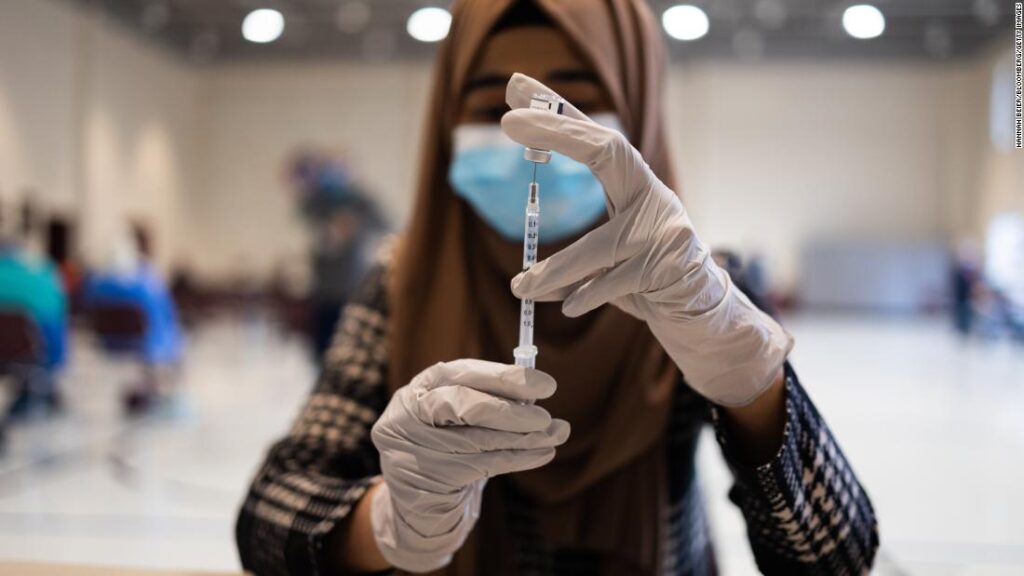Millions of people were lining up daily to get their shots. Instead of the steady drumbeat of cases, hospitalizations and deaths, we were tracking a new number: the percentage of Americans who had been vaccinated. This number, we believed, was our best chance to beat the virus.
The US was caught up in a fever dream of reaching herd immunity, a threshold we might cross where vulnerable individuals — including those too young to be vaccinated or those who didn’t respond well to the vaccines — might be protected anyway because, as a community, we would weave an invisible safety net around them.
With herd immunity, if someone does get infected by a virus, they are surrounded by enough people who are shielded against infection that the virus has nowhere to go. It fails to spread.
As a country, we had reached this point against some formidable viruses, such as rubella and measles. We thought we could get there with Covid-19. We were probably wrong.
“The concept of classical herd immunity may not apply to Covid-19,” Dr. Anthony Fauci, director of the National Institutes of Allergy and Infectious Diseases, said in an interview with CNN.
How we beat measles
Fauci points to measles as an ideal case study in herd immunity.
The US eliminated transmission of measles and has successfully kept the virus from circulating in this country because of three things: an extremely effective vaccine; a virus that doesn’t change, or mutate, in significant ways over time; and a successful childhood vaccination campaign.
Many states in the US had once reached an ambitious public health goal of getting more than 90% of their children vaccinated against the disease by the time they started kindergarten.
This high level of vaccination coverage, the durability and effectiveness of the vaccine, and the relative stability of the virus have helped the United States prevent major outbreaks of the disease for more than 20 years.
Still, herd immunity has to extend beyond the borders of the United States. Each year, a certain number of cases arise when travelers bring it into the country, but it has never regained a foothold here and continued to circulate, because we have community-level protection against it.
Corralling Covid
Covid-19, unfortunately, isn’t playing by those same rules.
“Bad news number one,” said Fauci, is that the coronavirus that causes Covid-19 changes a lot and in significant ways.
“We’ve already experienced over a period of two years that we’ve had five separate variants Alpha, Beta, Delta, Omicron. And now BA.2 from Omicron one,” he said.
“Bad news number two is that there’s a lack of a wide acceptance of safe and effective vaccines,” Fauci said. Put simply, not enough people have been vaccinated.
Kucharski estimated that for a virus as contagious as the Delta variant, 98% of the population would need to be vaccinated if the vaccines we have could prevent 85% of transmission of the virus.
If the vaccines didn’t prevent transmission to that extent, he said, then herd immunity probably wouldn’t be possible with the vaccines we currently have.
If not enough people get vaccinated — which has to be virtually the entire population for highly contagious variants — or the vaccines we have don’t stop nearly all transmission, we may not be able to reach herd immunity for Covid-19 until most people have developed immunity after getting the infection, Kucharski wrote in the article.
There are other factors to take into account, too, such as the durability of immunity over time.
“Not only is vaccine induced immunity not lifelong, but infection induced immunity is not lifelong,” Fauci said, which means we’re going to need repeated exposures to either vaccines or infection to keep our defenses up to speed.
Holding out hope
Some are not ready to completely give up on the idea, however.
Barry Bloom is an emeritus professor of public health at Harvard University. He says one way to get there would be to make better vaccines.
Companies are working on vaccines that would target more stable regions of the virus, including the stem of the spike protein, that doesn’t appear to mutate as much. That might create more durable immunity that could stand up to to the shape-shifting of the viruses’ variants.
There are also promising nasal spray vaccines that may help develop antibodies in nose and throat. The hope is that these vaccines may generate immunity in the tissues its most needed to create the kind of sterilizing immunity that prevents transmission.
If not a vaccine in a nasal spray, Bloom says, why not put monoclonal antibodies in a spray you could take daily before leaving home to prevent transmission of the virus?
“And the question is are they good enough to wipe it [the virus] out before they’re asymptomatically transmitted? Or is it a constant game that we’re going to have to live with?” Bloom said in an interview with CNN.
Or, Bloom says, maybe the best we can expect is an assist from evolution. He says the virus is changing to become more contagious over time, but not necessarily to cause more serious disease. Ultimately, killing a person doesn’t do the virus much good. It needs hosts. It would be much better for the virus to evolve to become as contagious as it can be, but maybe with less propensity for causing severe disease.
Bloom thinks this is probably what happened to the coronaviruses that now cause common colds. He thinks they probably once started as fierce predators but evolved over time to just be pests.
That way, they get to live on, but so do we.

